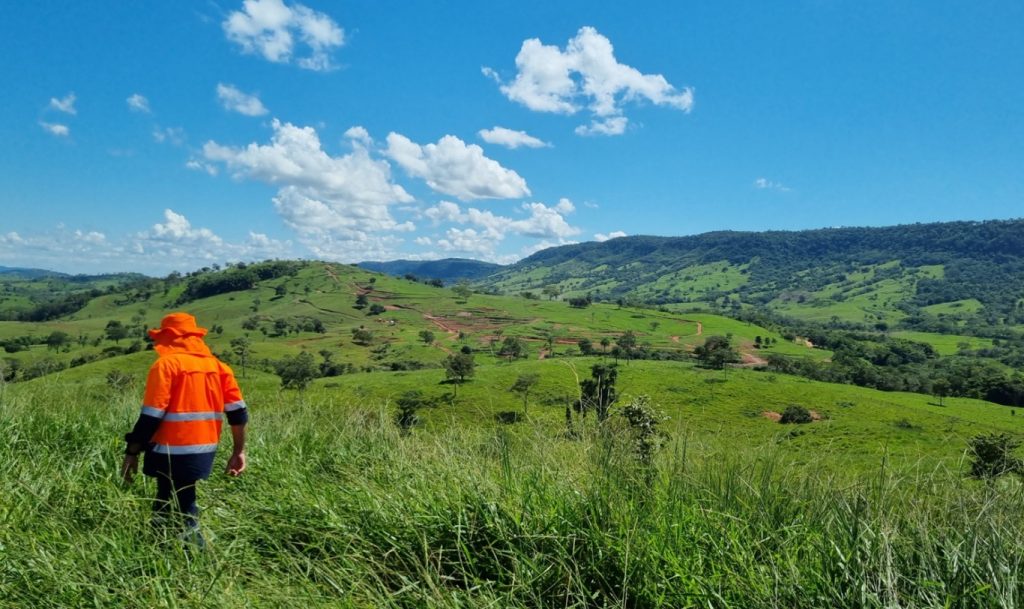Meridian Mining drills 6.7% CuEq over 1.7 metres at Santa Helena mine, Brazil

Meridian Mining U.K. Societas [TSX-MNO; OTCQX- MRRDF; FSE/Tradegate-2MM)] reported further strong intercepts of shallow copper, gold, silver and zinc mineralization at the Santa Helena mine, Mato Gross state, Brazil.
New results include CD-329: 6.8 metres at 4.9% copper equivalent from 38.7 metres; CD-332 returned 5.8 metyres at 4.5% CuEq from 32.2 metres; and CD-335 returned 7.2 metres at 4% CuEq from 35.5 metres. Santa Helena is one of many high-priority targets within the 55-km Cabacal volcanic massive sulphide (VMS) belt. Locally it is part of a highly prospective open trend, that through drilling, soil surveys and geophysics has now been extended to over approximately 3.1 km.
Drilling continues at Santa Helena and at the Cabacal mine with further results pending.
Highlights of further shallow high-grade gold and base metals intercepted at Santa Helena. Santa Helena returned near-surface high-grade gold and base metal mineralization, including CD-329 that yielded 6.8 metres of 4.9% CuEq (1.2% Cu, 1.4 g/t Au, 52.7 g/t Ag and 10.5% Zn) from 38.7 metres.
CD-332 returned 5.8 metres of 4.5% CuEq (1.1% Cu, 0.7 g/t Au, 36.0 g/t Ag and 10.9% Zn) from 32.2 metres.
CD-335 returned 7.2 metres of 4.0% CuEq (1.5% Cu, 2.1 g/t Au, 43.4 g/t Ag and 5.4% Zn) from 35.5 metres, including 1.7 metres of 6.7% CuEq (3.0% Cu, 2.7 g/t Au, 63.6 g/t Ag and 8.9% Zn from 36.4 metres.
The prospective and open Santa Helena VMS trend now mapped over ~3.1km. Cabacal infill and extension drilling continues to deliver robust gold and copper mineralization. True width is considered to be 80-90% of intersection width.
Gilbert Clark, CEO, commented: “The company is very pleased with the continued flow of strong gold and base metal intersections from Santa Helena at depths within easy reach of a potential open pit development. In addition, our ongoing geophysical program continues to map the prospective VMS target horizon as the survey continues to extend southeast from Santa Helena. Santa Helena’s host geology has now been mapped over a 3.1km, and is open along strike and down plunge, delivering more upside to test going forward. Santa Helena is evolving to be a second potential open pitable resource target within the Cabacal belt and is only a short trucking distance to the Cabacal mine.”
Santa Helena is a Cu-Au-Ag & Zn VMS deposit located ~9km to the southeast of the Cabacal Mine. It has over 10,000 metres of historical drilling and is one of a series of exploration targets along the 11km Cabacal Mine Corridor.
The company has completed seventeen holes to date, with results reported thus far confirming strong near-surface mineralization, including CD-311 that returned 19.1 metres of 1.3% CuEq from 8.0 metres, including 4.9 mettres of 4.6% CuEq from 22.2 metres. CD-321 returned 23.1 metres of 1.0% CuEq from 6.1 metres, including 3.6 metres of 3.3% CuEq from 10.0 metres. CD-325 returned 14.9 metres of 3.1% CuEq from 26.3 metres, including 6.7 metres of 4.3% CuEq from 27.5 metres.
The latest results have continued to test mineralization in the historical mine area, building out from the earlier CD-325 intersection. The results confirm the extension of robust widths of high-grade mineralization that remain open along strike and down plunge.
The company continued its Gradient Array Induced Polarization survey (IP survey) over the east-southeastern extensions to Santa Helena, into the Alamo property. This newly defined chargeability corridor has been extended a further 400 metres southeast, now totaling 2.0km from the limit of Santa Helena’s historical resource. The anomaly aligns with gold and base metal soil anomalies defined in BP surveys, continuing to add valuable context to this target as an extensional corridor for Santa Helena-style mineralization.
